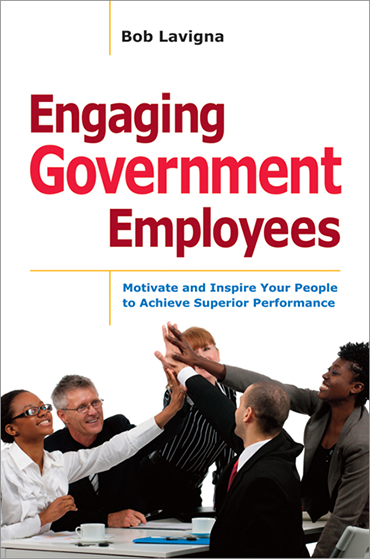How to tap the power of employee engagement

Bob Lavigna brings more than 30 years of experience in workforce management to the pages of his new book, "Engaging Government Employees."

Government leaders face significant challenges in inspiring their employees to perform well despite harsh public criticism and without many of the financial incentives available to their private-sector peers. Bob Lavigna’s new book, “Engaging Government Employees: Motivate and Inspire Your People to Achieve Superior Performance,” offers a wealth of strategies for federal managers.
Lavigna has more than 30 years of experience in leading workforce management organizations, including stints at both the Partnership for Public Service and the Government Accountability Office. He is now assistant vice chancellor and director of human resources at the University of Wisconsin-Madison.
In his book, Lavigna outlines the dilemma faced by government leaders. “Those who criticize government, and the people who work in government, have lost sight of the critically important work of the public sector," he wrote. "At the same time government is being castigated and hamstrung by budget cuts, the public continues to ask the public sector to solve some of the toughest and most intractable problems.”
He defines employee engagement as “a heightened employee connection to work, the organization, the mission or coworkers.” Organizations with engaged employees perform better than those with disengaged, unmotivated employees. “According to Gallup, high-engagement organizations are almost 20 percent more productive than their low-engagement counterparts,” he said.
The Merit Systems Protection Board has reached a similar conclusion. Its 2012 survey of 37,000 federal employees found that higher levels of employee engagement were linked to:
* Higher rates of success in achieving strategic goals.
* Higher employee retention.
* Fewer days of sick leave and less time lost to work-related injury or illness.
* Fewer equal employment opportunity complaints.
The organization’s research, which Lavigna uses to support his argument, also revealed that levels of engagement often differ by racial and ethnic groups. Specifically, Asian employees were the most engaged, and Native American employees were the least engaged. Those findings have implications for the Partnership for Public Service’s recent report on federal employees’ satisfaction with support for diversity at their agencies. The results of that survey imply that when employees feel empowered, higher levels of engagement follow.
Clearly, strong employee engagement is important for agencies that want more productivity and happier employees, and Lavigna offers dozens of studies and research findings that support that connection. But how do federal leaders create more engagement? He answers that question in a way that he says differs from other books. He focuses more on the science of employee engagement and the research that supports its power. He also concentrates on the public sector and the unique challenges it faces.
Lavigna presents many strategies for improving employee engagement rather than a one-size-fits-all approach. “From the start, it is important to understand that there is no silver bullet to achieve high levels of employee engagement," he wrote. "Instead, what’s needed is silver buckshot — an integrated series of actions, specific to each government jurisdiction or agency, to measure and then improve engagement.”
He does, however, offer a tool that public-sector organizations can use to assess and improve employee engagement (see “5 steps to increased engagement”). It is, he said, “a journey worth embarking on to help government — the nation’s largest and perhaps most important employer — achieve its potential.”
5 steps to increased engagement
Lavigna offers a detailed strategy for measuring and continually boosting employees’ engagement by conducting surveys on a regular basis. Here is an overview of his process model.
1. Plan the survey. Decide whom to survey, what questions to ask, when and how to administer the survey, and how the results will be analyzed.
2. Conduct the survey. Develop the survey in-house or use a pre-existing survey, then administer it yourself or hire a contractor to conduct it. Maximize response rates by providing online and print versions of the survey, and follow up to make sure employees take the time to complete it.
3. Report and analyze the results. Review the results question by question to identify areas that need improvement, and consider allowing employees to explain their responses and provide additional insights.
4. Take action. Follow up on the survey’s results; not taking action can decrease the level of engagement. Form an action team composed of employees from all levels to analyze data, develop recommendations and create detailed action plans.
5. Sustain engagement. Measure employee engagement via surveys on a regular basis. Hold everyone, including leaders, accountable for maintaining and improving engagement.
NEXT STORY: FOIA Machine could add to agency workloads


